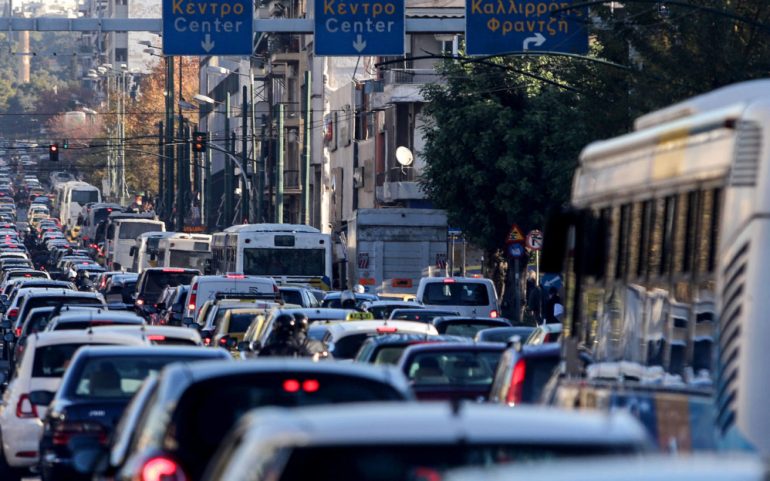Η Athens, Greece is a city with a severe traffic problem, making the movements of its inhabitants, but also of the numerous tourists, extremely difficult.
Traffic jams, double-parked cars, parking of cars and motorcycles on sidewalks and much more that we see every day on the streets of the capital compose a scene of chaos.
The city center could be more attractive, more humane and enable citizens to enjoy the beautiful and historic parts of Athens without facing queues from hundreds of cars, without turning into track and field athletes to pass between parked cars and at the same time have the opportunity for a walk or bike ride.
The newsbeast.gr contacted the professor of town planning and transportation planning at National Technical University of Athens, Thanos Vlastos, to analyze the traffic problem of Athens and at the same time to present the solutions that can make the city better for everyone.
The Bavarians' original plan was to have a city of 40.000
Initially, Mr. Vlastos explained how the first urban planning of the city was done by the Bavarians, who, however, had calculated a city with 40.000 inhabitants, a number that was quickly exceeded.
"An Athens of about 10.000 inhabitants, which has consistently maintained the same area for over 2.000 years, could not be painlessly transformed into a city of 3,5 million, in just 200 years and without even preparing for it. For example, the first plan by the Bavarian city planners for Athens-capital, after its liberation, was only for a city of 40.000 inhabitants, size that was exceeded in very few years ", says o professor.
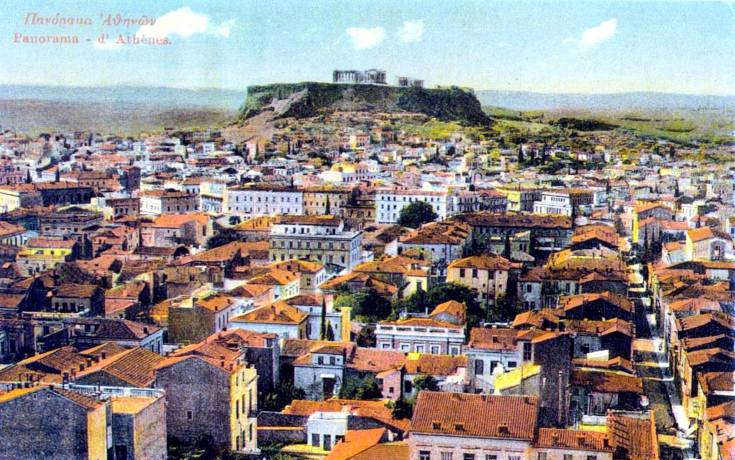
As for how Athens got to its current appearance, Mr. Vlastos stressed: "Then the development of the city was fragmentary, without trunk, without directions, with partial and introverted urban planning, indifferent to their connections with their neighbors. . What we now roughly call a city was formed, but the lack of structure makes it clear that a coherent, healthy and readable urban body has never been attempted, with paths of integration, with appropriate proportions between public and private, open and closed, with elements reference and orientation».
The professor then analyzes that "the key elements for the physiognomy of a city are the streets, the building blocks and the open spaces" and presents the problems:
- In streets, extremely narrow, because the landowners did not allow them to be deprived of a minimum of space, so that public space would emerge, the inhabitants do not move humanly because they do not fit, they do not experience the city, they are just trapped.
- In search of maximum profit, the plots are so small, hence the building blocks. In this way, internal common courtyards could not be created, except for useless ones.
- Open spaces, almost non-existent, do not communicate, they are difficult to access.
The car is now in the equation, while the culture around public transport also plays an important role, as he explains: “To this deficit background was added the car, ie the most unsuitable means of transportation, when space is insufficient. Athens could function much better if it relied mainly on public transport, cycling and walking. However, these are solutions that presuppose a different culture, a different way of life and more responsible choices towards climate deregulation ".
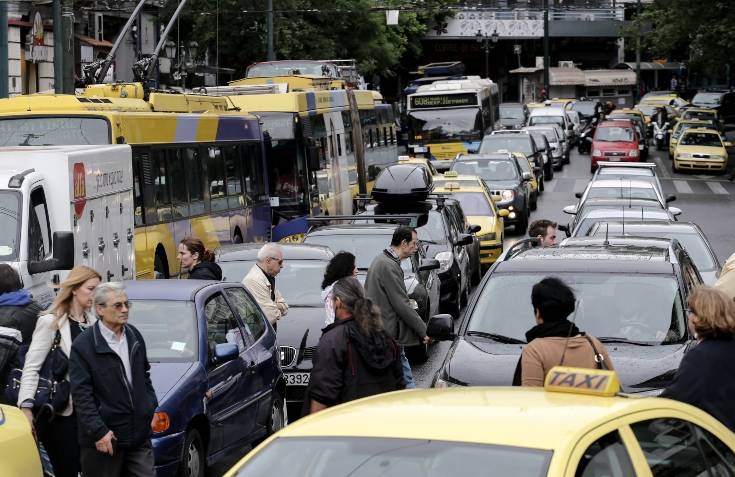
- What are the first steps that should be taken for a better city in terms of transportation?
"Given the economic crisis, the solutions that will be feasible will be low cost. But there are many that would have spectacular results:
- Speed limit on all local roads in residential areas to fall to 30 km / h, with their parallel institutionalization as smooth traffic roads. This is systematically applied in most residential areas of many European cities.
- With the exception of high-speed arteries, according to the Traffic Code, the bicycle can travel on the road network of any city. There is no sign today that reminds neither car drivers, that is, cyclists should be careful, nor those who would like to use a bicycle but avoid it because the social environment is not tolerant. If the relevant signage is placed on each road, dragging the bike from the sidelines and making it visible, the hitherto hostile mentality will change a lot.
- History protection of the center of Athens. Determining its limits and releasing it from the car. Routing inside the small electric buses to serve as a priority to its residents.
- Exercise of information policies and awareness of the inhabitants regarding the values of the city. Protection of the neighborhood from transparent flows.
- Design of pedestrian crossings, at intersections and inside building blocks ".
Solutions tested abroad
The Polytechnic, as Mr. Vlastos told us, cooperates with the competent ministries, but also with the municipalities, conducting relevant research. To improve or solve the problem requires brave political decisions and then the design to "press" on tried and tested solutions from cities abroad.
Is there any research from the Polytechnic for ways that could solve the problem of Athens?
"In general Polytechnic cooperates with competent ministries and municipalities because its objectives, in addition to teaching, include dealing with the problems of Greek society. The state funds the Polytechnic for the elaboration of researches and for the promotion of solutions that the place needs. However, solutions to traffic problems are more political than technical.
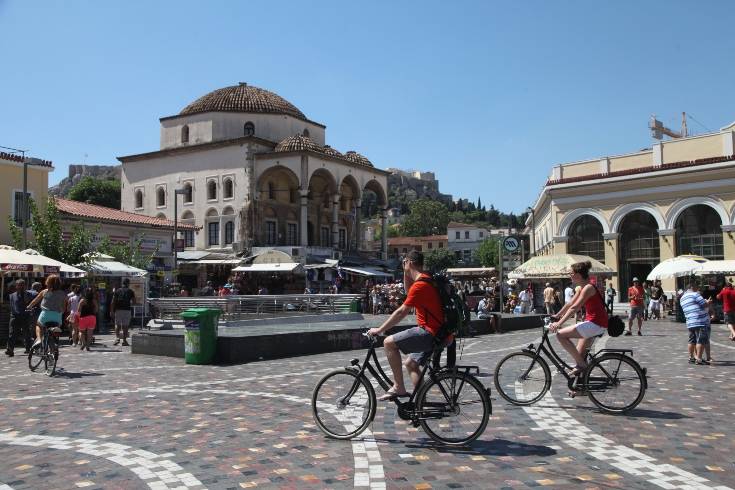
If it were decided to pursue bold policies to protect the historic center and residential areas from the car, reduce speeds and support public transport, walking and cycling, it would pave the way for designing solutions that have already been tested abroad and have proven to be their effectiveness. Without political decisions that encourage sustainable mobility the scientific community is not exploited, it remains inactive.
It should be noted that this also has a negative effect on education, because there are few good examples in this place that the teacher could rely on and teach in the amphitheater. "
What did the European cities do to solve or even reduce their traffic problems?
"European cities, almost as a whole, have a historic center, as do Greek ones. They protected it and made it stand out. In this way they honor their history, strengthen their identity, keep their inhabitants and attract visitors and investors.
European cities also have a significant percentage of pericentric areas that, although with somewhat wider streets, are not far from the Greek ones.
But in other European countries societies are more organized, there is education, street behaviors show respect for the strongest to the most vulnerable, they also show respect for the institutions and plans of the state. Solutions are given to which here there is an absolute refusal to apply. The gap is widening. "
Greek roads train us in rudeness and breaking the rules
What we see on the streets of Athens, but also on most Greek streets in general, are double-parked cars, motorbikes on the sidewalks and parking of vehicles in any place that suits everyone.

Is it a matter of education or something related to the wider traffic problem?
"It is obvious that when the capacity of a road network is exceeded and at the same time public transport is allowed to degrade, while at the same time alternatives can not be applied because they would need some space that is completely given to the car, then deadlocks are reflected in behavior.
In conditions where "I save myself", the Greek roads train all road users in rudeness and violation of the rules.
The cities we have built are not innocent, nor, of course, are we innocent. They reproduce the problems and attitudes trapped in them. However, the consequences of climate deregulation may awaken consciences, mobilize, cause upheavals. "
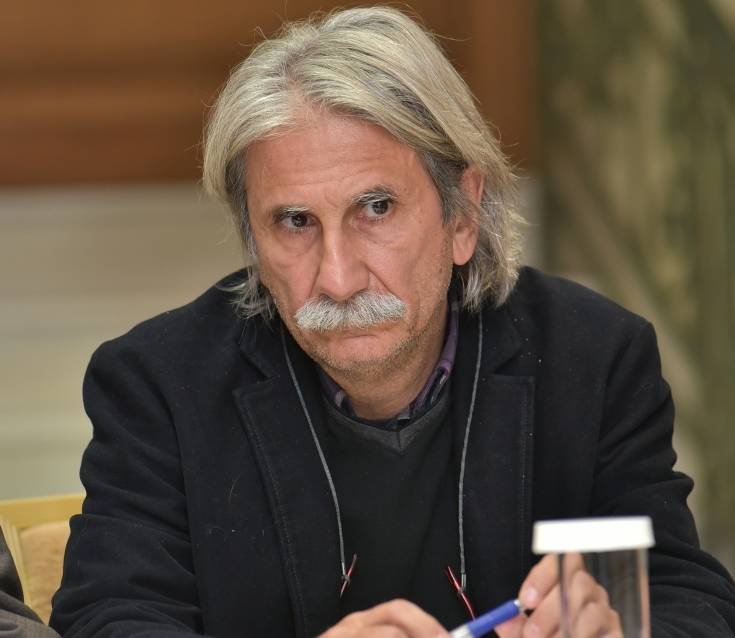
Thanos Vlastos, urban planner - transport specialist, is a professor at the National Technical University of Athens, School of Surveying. - Department of Geography and Regional Planning and founder and head of the Sustainable Mobility Unit. He holds a PhD from the University of Liège, CES from the Ecole Nationale des Ponts et Chaussées (Paris), a graduate of the School of Architecture of the NTUA. and civil engineer at the Ecole Spéciale des Travaux Publics in Paris.
He has also taught in Postgraduate Programs at the Open University (11 years) and at the NTUA. He has participated with Announcements in a large number of international Conferences in Greece and abroad and has published in many scientific journals. As a scientific officer he has prepared more than 45 research projects for the European Commission and for public bodies in Greece.
The main object of his interest is Sustainable Mobility and in particular the design of policies to promote public transport, cycling and walking as well as the upgrading of the qualities of the urban environment and public spaces.
He is the author of nine related books. He has represented Greece from responsible positions for technical issues of his specialty in international bodies, committees and city networks such as the OECD, Eurocities, Car Free Cities, etc.
